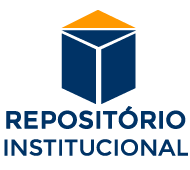Please use this identifier to cite or link to this item:
http://aprender.posse.ueg.br:8081/jspui/handle/123456789/238| Title: | DIÁLOGOS INTERCULTURAIS NO ENSINO E APRENDIZAGEM DE LÍNGUA INGLESA: O QUE REVELAM OS LIVROS DIDÁTICOS DO 8º ANO DO ENSINO FUNDAMENTAL II |
| Authors: | Araujo, Kellita do carmo ANJOS, Maria Elizete Pereira |
| Keywords: | Interculturalidade Ensino de inglês Diversidade cultural. |
| Issue Date: | 5-Nov-2018 |
| Publisher: | Universidade Estadual de Goiás |
| Abstract: | Em uma sociedade heterogênea em que a comunicação ocorre por meio da transmissão e recepção de informações advindas de diferentes meios, é necessário que a aprendizagem de uma língua estrangeira ultrapasse o entendimento linguístico e alcance uma competência sociocultural. O presente trabalho objetivou compreender como alunos e professor lidam com a relação entre língua e cultura e com a interculturalidade para a produção de significados culturais a partir dos manuais de ensino de inglês como língua estrangeira (ILE), bem como as implicações dessas percepções para o próprio processo de ensino-aprendizagem. Este trabalho foi desenvolvido por meio de estudo bibliográfico e de uma pesquisa qualitativa/interpretativista. Um dos instrumentos para coletas de dados foi à análise de livros didáticos de língua inglesa. A análise permitiu refletir sobre os aspectos culturais e interculturais contemplados por este instrumento. Outro instrumento que corroborou com esta pesquisa foi a aplicação de questionários aos estudantes de inglês, contendo perguntas que os permitissem expressar suas ideias acerca da diversidade cultural. Os resultados deste estudo mostraram a relevância da contextualização na aprendizagem de línguas e a inseparabilidade entre língua e cultura. Evidenciou as contribuições da abordagem intercultural na sala de aula de língua inglesa para construção de atitudes de tolerância, respeito e aceitação das diferenças existentes nesta sociedade tão multicultural e multifacetada na qual vivemos. Palavras chave: Interculturalidade; Ensino de inglês; Diversidade cultural.________________________________________________________________ In a heterogeneous society in which communication takes place through the transmission and reception of information from different ways, it is necessary that the learning of a foreign language surpasses the linguistic understanding and reaches a sociocultural competence. The present work aimed to understand how students and teachers deal with the relationship between language and culture and interculturality for the production of cultural meanings from the teaching of English as foreign language (EFL) manuals, as well as the implications of these perceptions for the teaching-learning process itself. This work was developed through a bibliographical study and a qualitative / interpretative research. One of the tools for data collection was the analysis of English-language textbooks. The analysis allowed to reflect on the cultural and intercultural aspects contemplated by this instrument. Another instrument that corroborated in research was the application of questionnaires to English students, containing questions that allowed them to express their ideas about cultural diversity. The results of this study showed the relevance of contextualization in language learning and the inseparability between language and culture. It highlighted the contributions of the intercultural approach in the English language classroom to build attitudes of tolerance, respect and acceptance of the differences that exist in this multicultural and multifaceted society in which we live. |
| URI: | http://187.6.250.232:8081/jspui/handle/123456789/238 |
| Appears in Collections: | Artigos científicos |
Files in This Item:
| File | Description | Size | Format | |
|---|---|---|---|---|
| KELITA-ARTIGO TC II 2018.pdf | 1,03 MB | Adobe PDF | View/Open |
Items in DSpace are protected by copyright, with all rights reserved, unless otherwise indicated.
